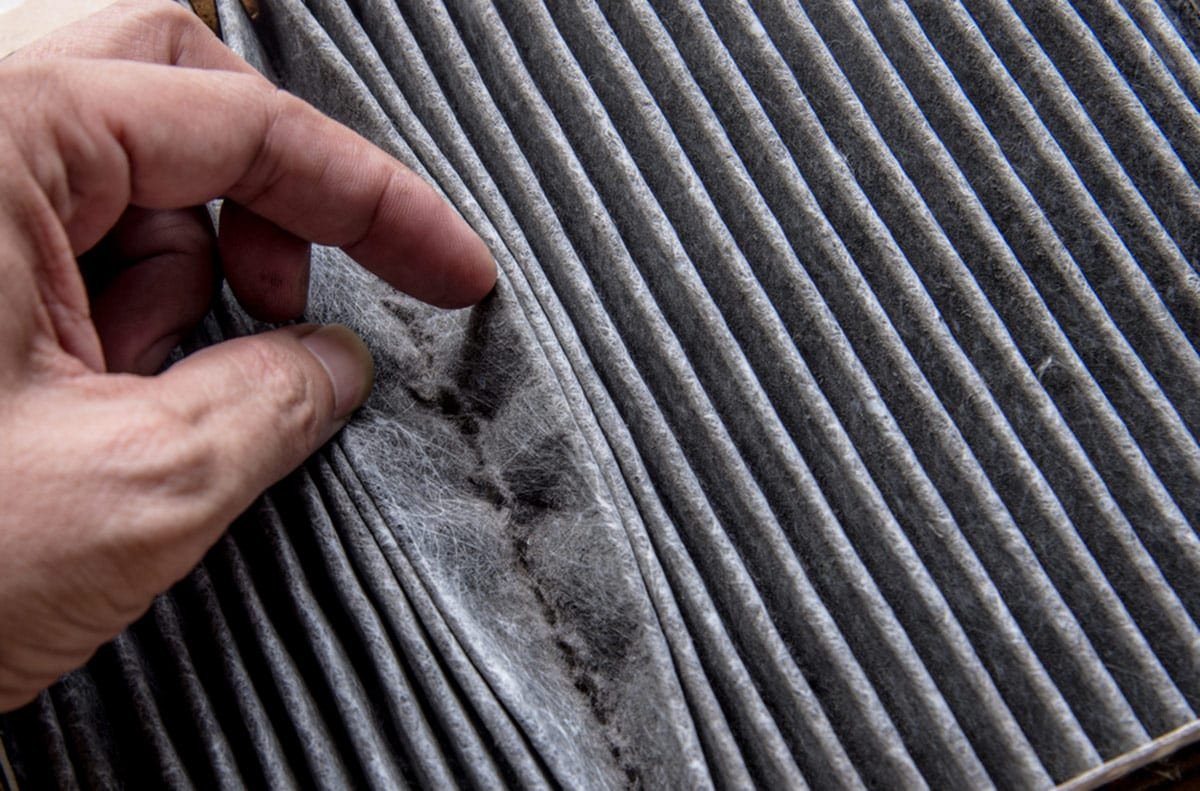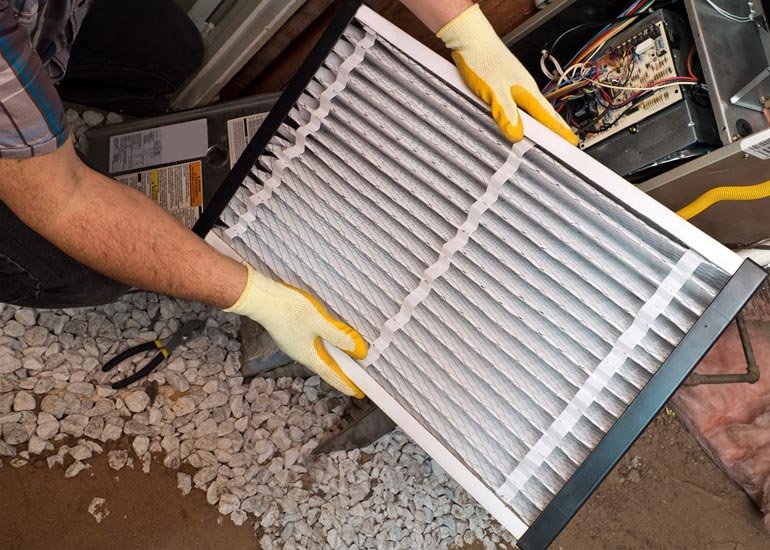Furnace filters may seem like a small part of your heating system, but they are critical in keeping your home safe and comfortable. Regular maintenance of your furnace filters can prevent potential hazards such as carbon monoxide poisoning. Carbon monoxide poisoning is a severe health risk many overlook, yet it can be easily prevented with simple measures.
It’s essential to understand that carbon monoxide is a silent killer that can cause irreversible damage to your health. Carbon monoxide poisoning occurs when there is a build-up of carbon monoxide gas in your home. According to the Centers for Disease Control and Prevention (CDC), around 400 Americans die annually due to unintentional carbon monoxide poisoning.
In this article, we’ll discuss the role of your furnace filter in preventing carbon monoxide poisoning and how regularly changing it can help.
What is Carbon Monoxide?
Carbon monoxide is a silent, odourless, and colourless gas that can quickly become a health hazard within homes. In the United States alone, carbon monoxide accounts for more than 20,000 emergency room visits each year and about 400 deaths annually. It’s, therefore, essential to have a clear understanding of what carbon monoxide is, where it comes from, and how it harms our health.
How Carbon Monoxide Forms
Carbon monoxide forms through incomplete combustion. It occurs when fuel sources such as wood, natural gas, propane, kerosene, and gasoline do not burn completely due to insufficient oxygen. When this happens, carbon monoxide replaces oxygen in the red blood cells and is distributed throughout the body, causing serious health effects. It is a byproduct of many common household appliances, including gas stoves, kerosene heaters, and gas-burning furnaces.
Sources of Carbon Monoxide
Carbon monoxide can come from many sources, including appliances that burn gas, oil, wood, and charcoal. The biggest contributors to household carbon monoxide build-up are stoves, gas ranges, and heating systems. Fireplaces, water heaters, and clothes dryers are other common sources that could also lead to carbon monoxide poisoning.
It is also crucial to understand that even cars and small engines such as generators can produce dangerous levels of carbon monoxide and should never be left running in an enclosed space.
Hazards of Carbon Monoxide
Carbon monoxide poisoning can cause severe illness or death, with symptoms that range from headaches and dizziness to weakness and confusion. Long-term exposure to low levels of carbon monoxide can also result in serious health problems such as heart disease and brain damage.
Even with early detection, the effects of carbon monoxide can be long-lasting and may require hospitalization or ongoing treatment. It is, therefore, critical to take active measures to prevent carbon monoxide exposure in your home.
How a Dirty Furnace Filter Leads to Carbon Monoxide Poisoning
Have you ever wondered how a dirty furnace filter can contribute to carbon monoxide poisoning? Furnace filters are essential in regulating the airflow through your heating system. When they become clogged, the system’s efficiency drops and the result could be incomplete combustion with a resulting build-up of dangerous carbon monoxide gas.
Furnace Filter’s Importance in Airflow of the System
The furnace filter’s primary function is to protect the heating and cooling system from dust and debris and eliminate the particles that circulate through the house’s air supply. Filters are vital in maintaining your HVAC’s efficiency by allowing proper airflow throughout the system. A properly functioning filter enables better performance, lower energy consumption, and a healthier indoor environment.
Blocked Airflow Causing Incomplete Combustion
When furnace filters become dirty and obstructed, the heating system works harder to maintain the desired temperature. As a result, the combustion system gets an insufficient oxygen supply, leading to incomplete combustion. Incomplete combustion is when burning fuel doesn’t produce enough heat and releases carbon monoxide into the air.
It is critical to understand that the more clogged your furnace filter is, the easier it is for dangerous carbon monoxide gas to accumulate within your home.
Overheating Heat Exchangers
An overheating heat exchanger is another hazard of a dirty furnace filter. It happens when restricted airflow causes heat to build up within the system, increasing the chance of damage to its heat exchanger. If the heat exchanger overheats, the heat will cause deformities or cracks, allowing carbon monoxide to escape into the air. Once that happens, no filter stops it from contaminating your home’s air supply.
Preventing Carbon Monoxide Poisoning
Regular Furnace Filter Replacement
The simplest way to prevent carbon monoxide poisoning is to regularly replace your furnace filter. Changing your filter every 90 days or three months is recommended, or sooner if you have pets or family members with allergies. The frequency of filter replacement depends on the level of air pollution in the area where you live.
Regular filter replacement ensures the optimal performance of your heating system, allowing it to operate effectively and maintain optimal indoor air quality. It also helps prevent unburned fuel from remaining in the combustion chamber and releasing carbon monoxide gas, which can harm your health.
Annual Professional HVAC Inspection
A professional HVAC technician can inspect your heating system annually, ensuring it remains in top condition all year round. During the inspection, they will check the furnace, exhaust stack, flue pipes, and other components to ensure everything works correctly and does not produce any dangerous gases. They can also diagnose any potential issues before they become serious concerns.
Annual inspections are recommended by various organizations like the Consumer Product Safety Commission (CPSC), the American Lung Association, and the Environmental Protection Agency (EPA).
Carbon Monoxide Detector Installation
One of the most important things you can do to protect your family from carbon monoxide poisoning is to install carbon monoxide detectors in your home. Carbon monoxide detectors are designed to detect dangerous levels of carbon monoxide gas in your home and alert you before harmful effects occur.
Different types of carbon monoxide detectors available in the market can meet your needs. Some plug directly into a wall outlet, while others are battery-operated. Installing them according to the manufacturer’s instructions and the best practices of the fire department or other safety organizations is essential. Install detectors at least 10 feet away from heat sources, including fireplaces, furnaces, and stoves, since proximity to these can set off false alarms.
Carbon monoxide detectors can be a lifesaver, especially if installed in the right place. Also, some detectors are interconnected, so when one detects carbon monoxide, all installed in the living space will alarm.
Detector Test & Maintenance
Once installed, it’s essential to test carbon monoxide detectors regularly to ensure they are in good working order. Testing should be done monthly according to manufacturers’ instructions. The test button should be pushed, and a loud alarm should be heard.
Detectors should also be replaced every five years or according to the manufacturer’s instructions, even if the alarm works as expected. Be sure to refer to the manufacturer’s instructions for proper maintenance, as cleaning the unit or changing batteries may differ between models.
If the detector sounds an alarm, immediately evacuate and contact local emergency services. Carbon monoxide alarms should be taken seriously since they indicate the presence of dangerous gas. Regular and proper maintenance helps ensure reliability, sensitivity, and accuracy in detecting dangerous levels.
Conclusion
Some essential steps to prevent carbon monoxide poisoning at home include replacing your furnace filter regularly, scheduling annual professional HVAC inspections and installing and maintaining carbon monoxide detectors. Understanding the importance of these preventive measures is essential as they can save lives. Taking advantage of these devices will ensure your family remains safe and healthy all year round. We encourage everyone to stay informed and take preventive measures against potential dangers like carbon monoxide poisoning before it’s too late.








